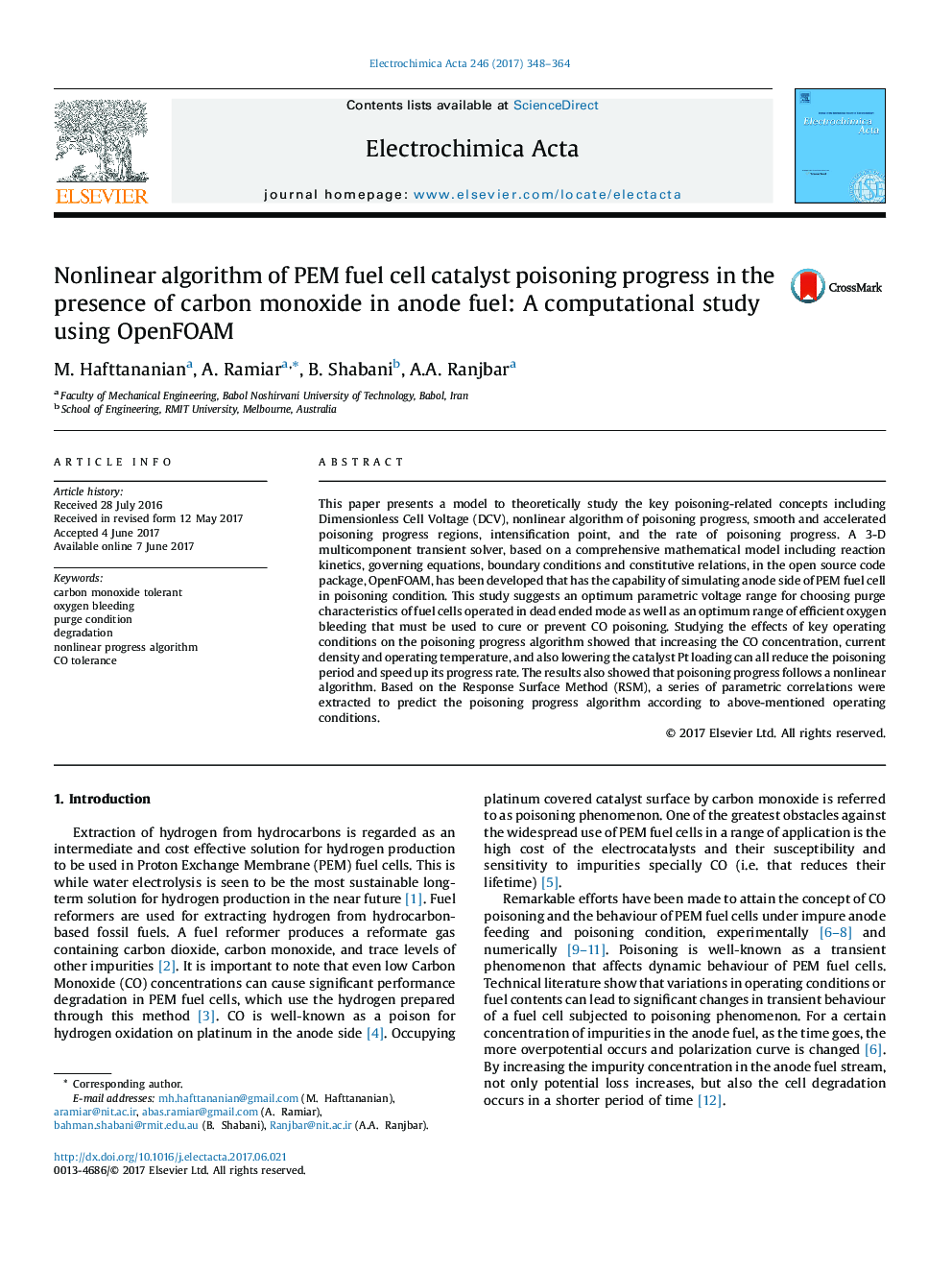| Article ID | Journal | Published Year | Pages | File Type |
|---|---|---|---|---|
| 6470472 | Electrochimica Acta | 2017 | 17 Pages |
This paper presents a model to theoretically study the key poisoning-related concepts including Dimensionless Cell Voltage (DCV), nonlinear algorithm of poisoning progress, smooth and accelerated poisoning progress regions, intensification point, and the rate of poisoning progress. A 3-D multicomponent transient solver, based on a comprehensive mathematical model including reaction kinetics, governing equations, boundary conditions and constitutive relations, in the open source code package, OpenFOAM, has been developed that has the capability of simulating anode side of PEM fuel cell in poisoning condition. This study suggests an optimum parametric voltage range for choosing purge characteristics of fuel cells operated in dead ended mode as well as an optimum range of efficient oxygen bleeding that must be used to cure or prevent CO poisoning. Studying the effects of key operating conditions on the poisoning progress algorithm showed that increasing the CO concentration, current density and operating temperature, and also lowering the catalyst Pt loading can all reduce the poisoning period and speed up its progress rate. The results also showed that poisoning progress follows a nonlinear algorithm. Based on the Response Surface Method (RSM), a series of parametric correlations were extracted to predict the poisoning progress algorithm according to above-mentioned operating conditions.
